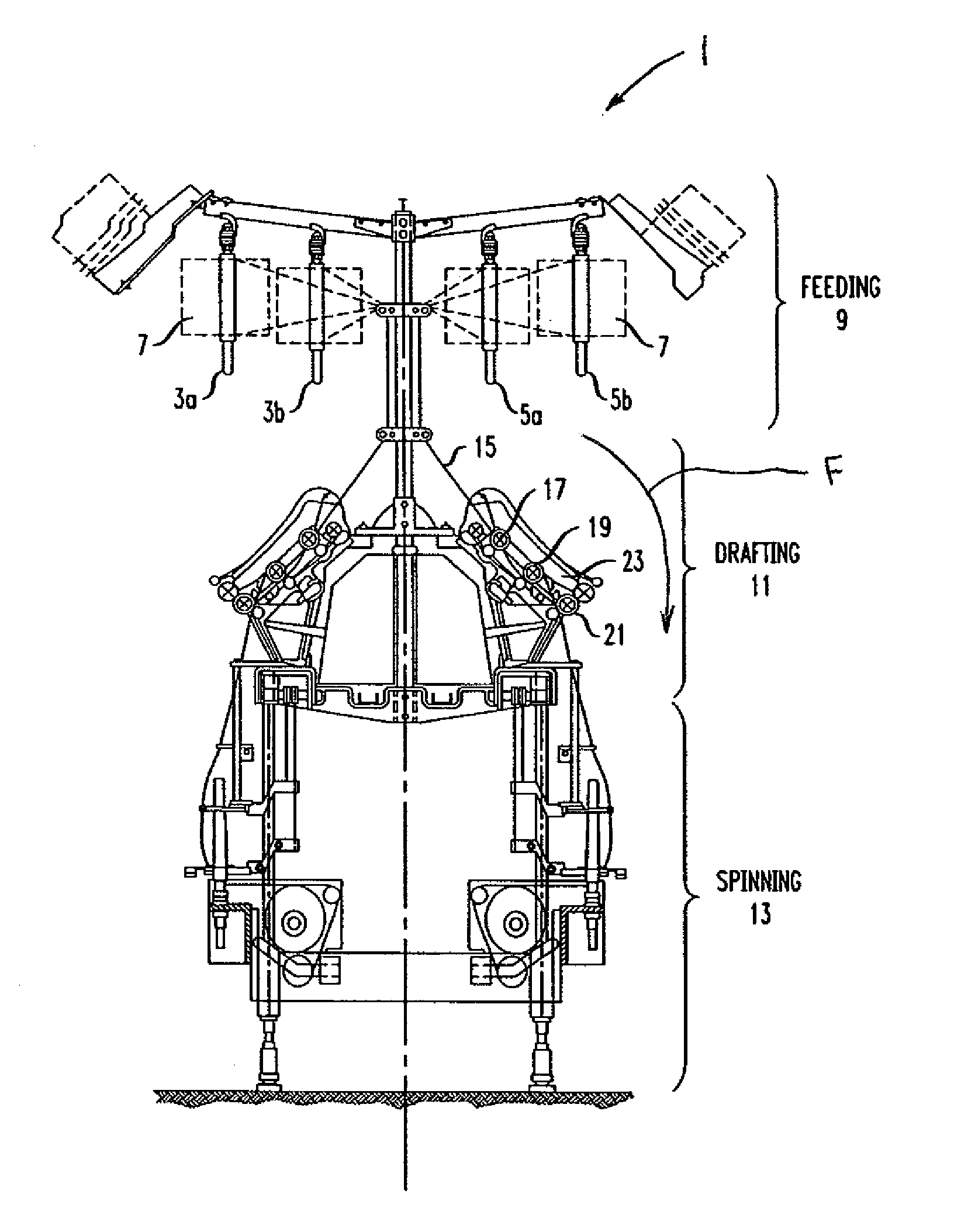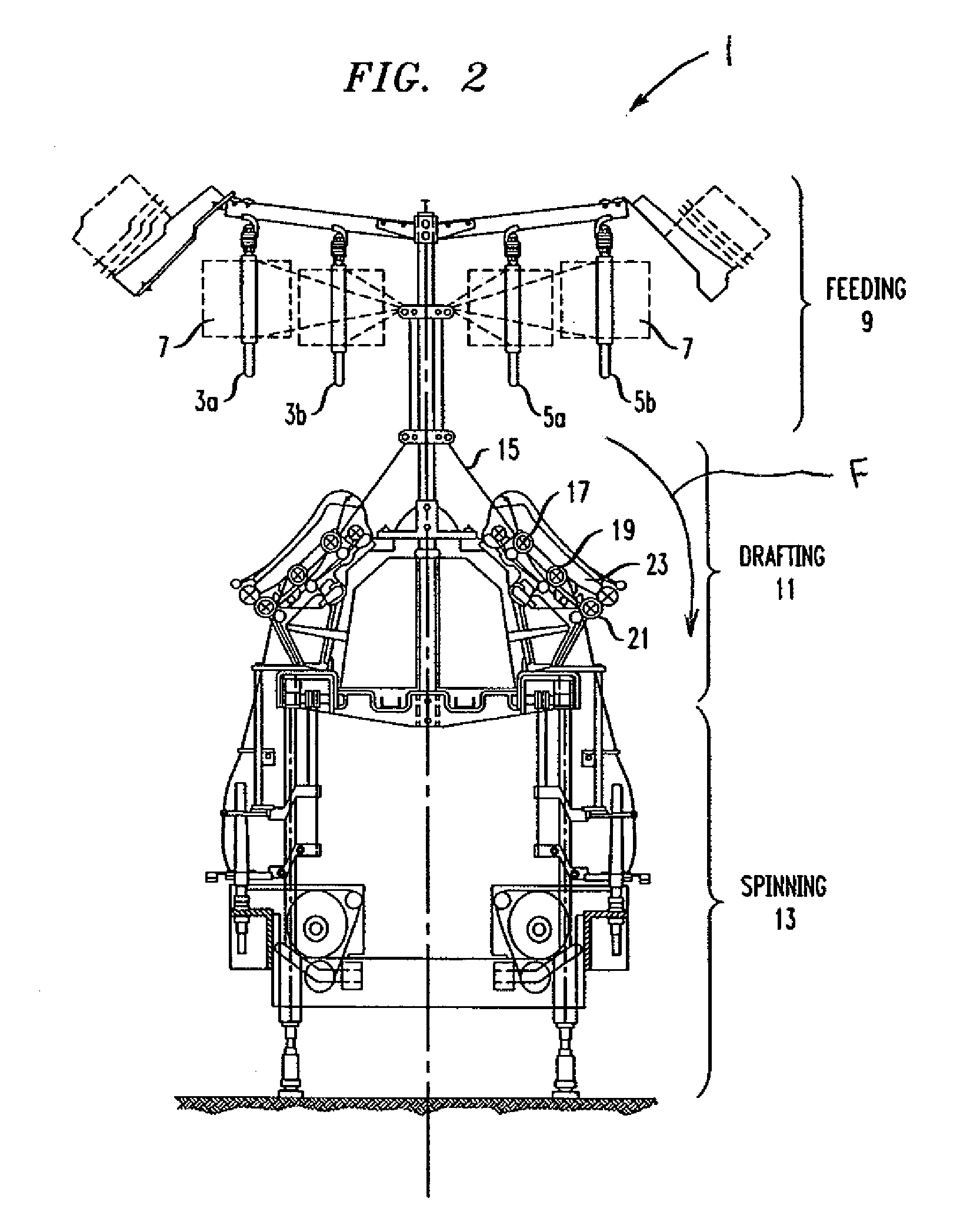Fire retardant fabrics and methods for making the same
a technology of fabric and flame retardant, applied in the field of fire retardant fabrics, can solve the problems of reducing the physical and aesthetic properties of the fabric, increasing the weight of the fabric by about 35 percent, reducing the tensile strength, tear strength, burst strength and abrasion resistance of the fabric,
- Summary
- Abstract
- Description
- Claims
- Application Information
AI Technical Summary
Benefits of technology
Problems solved by technology
Method used
Image
Examples
example 1
[0040]A 6,000 fiber OPF tow in which each of the individual fibers had a fineness of about 1.1 denier per fiber, was fed to though the apparatus 1, described above, to produce 18's singles cotton count spun OPF yarn. The 18's singles cotton count spun OPF was then knitted into a Jersey fabric construction. The Jersey knit fabric of Example 1 was subject to flammability testing and registered a limited oxygen index value (LOI) of 41.5. Two layers of Jersey knit fabric of Example 1, after laundering, were subject to Thermal Protective Performance (TPP) testing pursuant to ASTM F1060 and registered and TTP of 29.2. A single layer of the Jersey knit fabric of Example 1 was subject to flame resistance testing pursuant to ASTM D6413 and registered a 0.2 inch vertical flammability char length and 0.2 seconds afterflame time.
example 2
[0041]A 6,000 fiber OPF tow in which each of the individual fibers had a fineness of about 1.1 denier per fiber, was fed to though the apparatus 1, described above, simultaneously with a 40's cotton count polysulfonamide spun yarn to produce 18's singles cotton count hybrid spun OPF yarn. The 18's singles cotton count hybrid spun OPF yarn was then knitted into a Jersey fabric construction. A single layer of the Jersey knit fabric of Example 2 was subject to flame resistance testing pursuant to ASTM D6413 and registered a 0.2 inch vertical flammability char length and 0.45 seconds afterflame time.
example 3
[0042]A 6,000 fiber OPF tow in which each of the fiber had a fineness of 1.1 denier per fiber was woven directly into an 8×8 (ends X picks per inch) fabric construction without having first being processed into a yarn. The resulting fabric was found useful as a fire retardant fabric.
PUM
| Property | Measurement | Unit |
|---|---|---|
| length | aaaaa | aaaaa |
| length | aaaaa | aaaaa |
| length | aaaaa | aaaaa |
Abstract
Description
Claims
Application Information
 Login to View More
Login to View More - R&D
- Intellectual Property
- Life Sciences
- Materials
- Tech Scout
- Unparalleled Data Quality
- Higher Quality Content
- 60% Fewer Hallucinations
Browse by: Latest US Patents, China's latest patents, Technical Efficacy Thesaurus, Application Domain, Technology Topic, Popular Technical Reports.
© 2025 PatSnap. All rights reserved.Legal|Privacy policy|Modern Slavery Act Transparency Statement|Sitemap|About US| Contact US: help@patsnap.com



